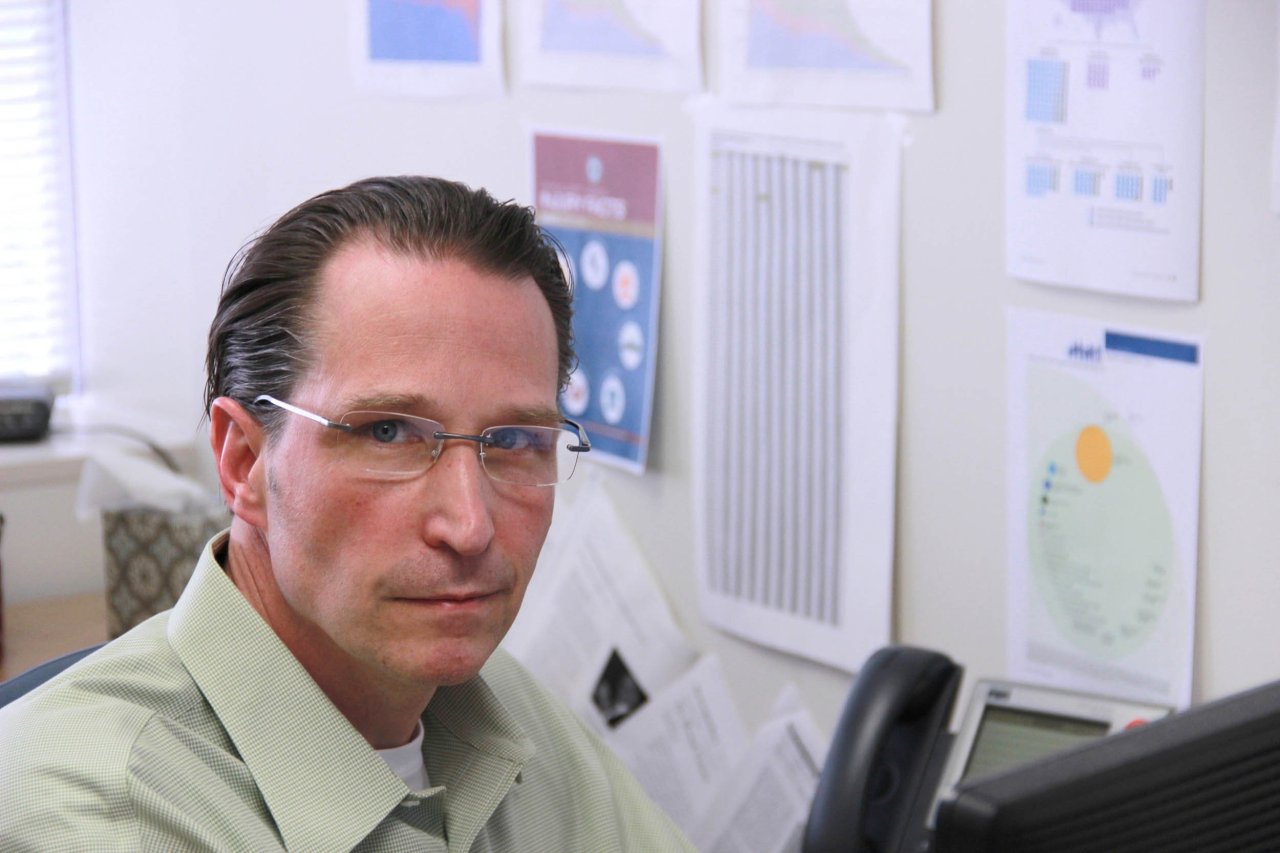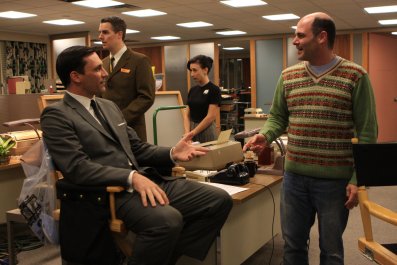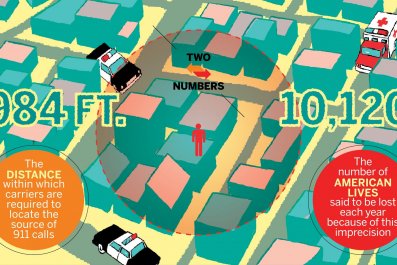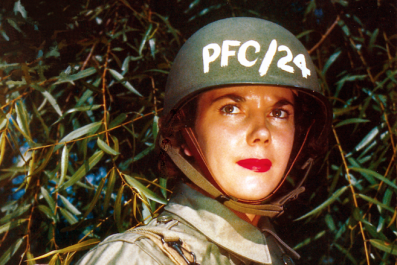Ken Kolosh spends his days figuring out how you're going to die.
It's not that he doesn't like you...or even knows you. It's his job. Kolosh manages the National Safety Council's (NSC) statistics department, and his 9-to-5 consists mostly of compiling Injury Facts, the council's annual magnum opus of unintentional injuries and deaths in the U.S. The Illinois-based nonprofit describes this 210-page book as the "go-to source" for injury and death statistics, and how much they cost the U.S. The publication also includes data on the annual and lifetime odds of dying from many unintentional causes, ranging from suffocation to drowning to dog bites.
To be clear, the point of Injury Facts isn't to scare readers into a rubber-roomed hermitage. Rather, Kolosh and the NSC hope its data can prevent unintentional injuries, the fourth leading cause of death in the U.S. The point of the more than 90-year-old publication is to apprise people of the most significant safety threats, so they can, ideally, change their behavior and lower their risk of a surprising and unfortunate accident.
To the public, probably the best known part of Injury Facts is the "Odds of Dying" component. That's the part—for 2013, motor vehicle: 1 in 8,938; cataclysmic storm, 1 in 5,018,409—that gets the most press. Though the NSC says "Odds of Dying" is not the core of the Injury Facts project, they do admit that it does a pretty good job of succinctly making the case of the project's primary argument: We're often afraid of the wrong things.
For example, you are far more likely to die from accidental poisoning than a plane crash. And if you don't understand that and similar bits of information, it limits your potential to modify your behavior in a way that could keep you alive longer. "People really do have influence on their fate," Kolosh says. "By your choices you make in life, you can profoundly decrease the likelihood of getting hurt in one of these ways."
Kolosh is polite and shy, as well as mild-mannered. He is a self-described "boring" dresser. The creative flourish in his paper-filled office is a tiny, stuffed toy pig that sits atop a shelf. Though unassuming, Kolosh will fight fiercely to prevent distortion of data, colleagues say. He says misinterpretation is dangerous because it could erode public trust in the safety organization. "Ken Kolosh is like the Clark Kent of injury and death," says Deborah Hersman, NSC president and CEO. "He doesn't hesitate to turn into Superman when it calls for it. He's really assertive when it comes to protecting the facts—he speaks for the data."
So how does Kolosh crunch these morbid numbers? He and an NSC research scientist start by obtaining the most up-to-date annual mortality data from the National Center for Health Statistics (NCHS), which keeps records on every death in the U.S. (The NCHS, part of the Centers for Disease Control and Prevention, gets its data from death certificates, which come from funeral homes, hospitals and medical examiners' offices.) The NSC gets additional death information from over 30 different sources, including organizations such as the National Highway Traffic Safety Administration and the U.S. Bureau of Labor Statistics. Multiple data sets allow the NSC to extract the most specific information possible on fatalities.

For example, instead of just tabulating driving deaths, the NSC can figure out how many are from DUIs and how many are from distracted driving—key details for promoting safety. To calculate the one-year odds of dying from a specific cause, Kolosh just divides the total U.S. population by the number of people who died due to a particular event. For lifetime odds, he divides these one-year odds by average life expectancy, which he gets from the U.S. Census Bureau.
CompilingInjury Facts takes about a year. The NSC has produced the publication since 1921, and is able to quickly pick out key trends. There were 130,557 deaths caused by unintentional injuries in 2013 (the most recent year for which NCHS data are available), the largest number in U.S. history, Kolosh says. The unfortunate trajectory is "largely due to pain reliever-related poisoning deaths," he notes.
The 10-year comparison is telling: In 2003, there were 28,700 total poisonings. Of these, 2,080 were heroin-related, while 8,517 were opioid-analgesic-related. Total drug-related poisoning deaths numbered 25,785 in 2003. By contrast, in 2013 there were 48,545 total poisoning deaths—and it was the No. 1 cause of unintentional death that year. Of these, 8,257 were heroin-related, while a whopping 16,235 were opioid analgesic-related. The same year, total drug-related poisoning deaths totaled 43,982.
When Injury Facts makes trends like this public, advocates tend to jump into action. At the end of March 2015, NSC went to Austin, Texas, to promote legislation that would increase access to naloxone, an opiate overdose antidote, as well as a texting while driving ban. As Kolosh is quick to remind us, you shouldn't think that the population-wide odds of dying from a given cause are the same as your likelihood of dying from that tragedy—your circumstances affect these odds. With motor vehicle deaths, for example, your odds of dying decrease significantly if you don't drink and drive, or speed.
Of course, there are the strange causes down at the bottom of the list, the ones you can't do much to prevent. For example, "ignition or melting of nightwear" resulted in three unintentional deaths in 2013. The "threat to breathing due to cave-in falling earth and other substances" resulted in 27 unintentional deaths. Not surprisingly, the NSC won't dedicate extensive resources toward the prevention of these unfortunate causes of death.
Kolosh, who holds a master's degree in organizational psychology, started on the path of death scholarship in 1993, when he got a job as an NSC research associate. Fresh out of grad school, he was charged with researching workplace safety. He left the NSC in 2001 and for a few years worked in corporate training management. But when he learned in 2009 of an opportunity to oversee Injury Facts, he wanted in immediately. He did wonder whether the job might make him more neurotic, and he does admit that spending his waking hours studying eternal sleep may make him "a glass-half-empty kind of person.
"Because I publish a book on how people die, I probably am a bit of a worrier," Kolosh says, adding that he listens to a good amount of gloomy rock music and loves The Cure, but "I don't consider myself goth, really, because I also like the Talking Heads." That sort of balanced approach seems to be apparent in everything he does. "To be in this business, you have to have a good bit of optimism," he reflects. "If you don't think you can make a difference, then you probably just naturally would move towards another job."
Kolosh's worrisome work at the NSC probably affects his 13-year-old son more than anyone else. "He's the only kid I see in the neighborhood who wears a bicycle helmet. I think he uses our employment as an excuse why," Kolosh jokes. "He says, 'My parents work at the safety council,' and then he does the teenage eye roll."
When his son was younger, he was in the Cub Scouts, in a den led by Kolosh's wife. Kolosh decided to do a safety demonstration for the group. One spring day, he bought two small watermelons. His son drew faces on them with a black Sharpie marker. Kolosh put a bicycle helmet on the watermelon with the happy face. He left helmetless the watermelon with the frown. He placed a tarp on his driveway and then dropped the helmet-wearing watermelon from approximately four or five feet in the air.
"The helmet and the watermelon bounced, and the watermelon was perfectly fine," he says. "I then took the watermelon without the helmet, and I dropped it — and it just splattered. All the kids just tore into the watermelon and ate it straight from the tarp, and then dropped the other watermelon. I don't know if they knew the lesson behind it, but they did enjoy the watermelon."
One-year odds of dying from a pedalcyclist incident? One in 341,794.











































